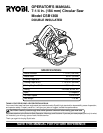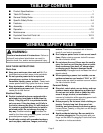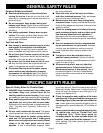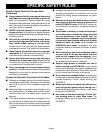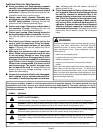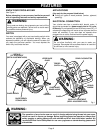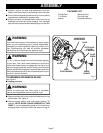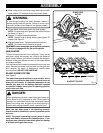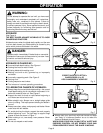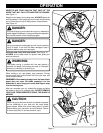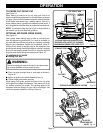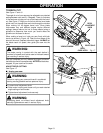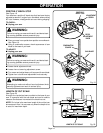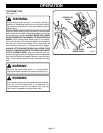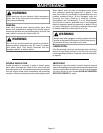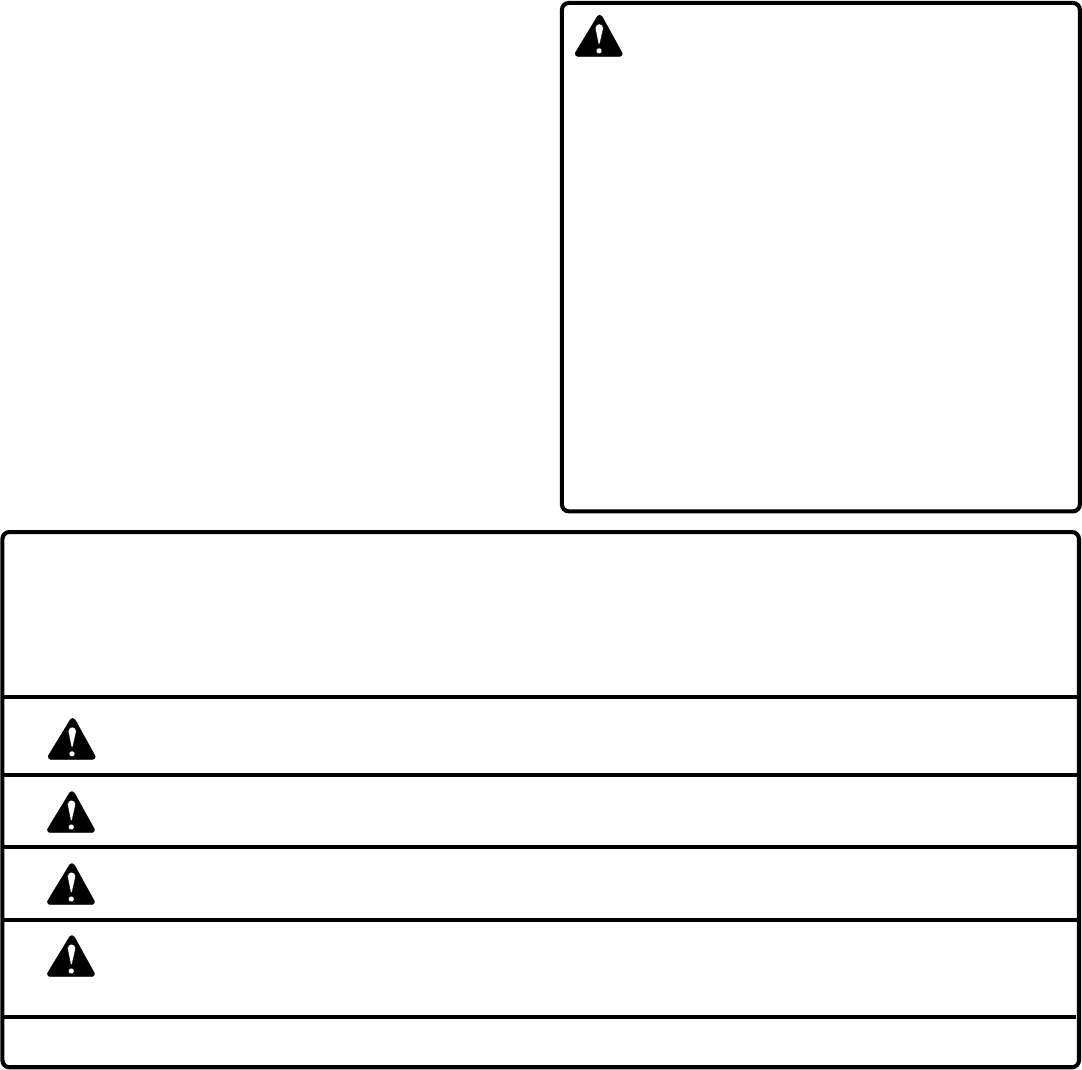
Page 5
Additional Rules for Safe Operation
■ Know your power tool. Read operator's manual
carefully. Learn its applications and limitations,
as well as the specific potential hazards related
to this tool. Following this rule will reduce the risk
of electric shock, fire or serious injury.
■ Always wear safety glasses. Everyday eye-
glasses have only impact-resistant lenses; they
are NOT safety glasses. Following this rule will
reduce the risk of serious personal injury.
■ Protect your lungs. Wear a face or dust mask if
the operation is dusty. Following this rule will
reduce the risk of serious personal injury.
■ Protect your hearing. Wear hearing protection
during extended periods of operation. Following
this rule will reduce the risk of serious personal
injury.
■ Don't abuse cord. Never carry the tool by the
cord or yank it to disconnect it from the recep-
tacle. Keep cord away from heat, oil, and sharp
edges. Following this rule will reduce the risk of
electric shock or fire.
■ Make sure your extension cord is in good con-
dition. When using an extension cord, be sure
to use one heavy enough to carry the current
your product will draw. A wire gage size (A.W.G.)
of at least 14 is recommended for an extension
cord 25 feet or less in length. A cord exceeding
50 feet is not
recommended. If in doubt, use the
next heavier gage. The smaller the gage num-
ber, the heavier the cord. An undersized cord will
cause a drop in line voltage resulting in loss of
power and overheating.
■ Inspect tool cords periodically and, if damaged,
have repaired at your nearest authorized ser-
vice center. Constantly stay aware of cord loca-
tion. Following this rule will reduce the risk of
electric shock or fire.
■ Check damaged parts. Before further use of the
tool, a guard or other part that is damaged should
be carefully checked to determine that it will
operate properly and perform its intended func-
tion. Check for alignment of moving parts, bind-
ing of moving parts, breakage of parts, mount-
ing, and any other conditions that may affect its
operation. A guard or other part that is damaged
should be properly repaired or replaced by an
authorized service center. Following this rule will
reduce the risk of electric shock, fire or serious
injury.
The purpose of safety symbols is to attract your attention to possible dangers. The safety symbols, and the
explanations with them, deserve your careful attention and understanding. The safety warnings do not by
themselves eliminate any danger. The instructions or warnings they give are not substitutes for proper accident
prevention measures.
SYMBOL MEANING
SAFETY ALERT SYMBOL:
Indicates danger, warning, or caution. May be used in conjunction with other symbols or pictographs.
DANGER: Failure to obey a safety warning will result in serious injury to yourself or to others. Always
follow the safety precautions to reduce the risk of fire, electric shock, and personal injury.
WARNING: Failure to obey a safety warning can result in serious injury to yourself or to others. Always
follow the safety precautions to reduce the risk of fire, electric shock, and personal injury.
CAUTION: Failure to obey a safety warning may result in property damage or personal injury to yourself
or to others. Always follow the safety precautions to reduce the risk of fire, electric shock, and personal
injury.
NOTE: Advises you of information or instructions vital to the operation or maintenance of the equipment.
WARNING:
Some dust created by power sanding, sawing, grinding,
drilling, and other construction activities contains
chemicals known to cause cancer, birth defects or
other reproductive harm. Some examples of these
chemicals are:
• lead from lead-based paints,
• crystalline silica from bricks and cement and other
masonry products, and
• arsenic and chromium from chemically-treated
lumber.
Your risk from these exposures varies, depending on
how often you do this type of work. To reduce your
exposure to these chemicals: work in a well ventilated
area, and work with approved safety equipment, such
as those dust masks that are specially designed to filter
out microscopic particles.



